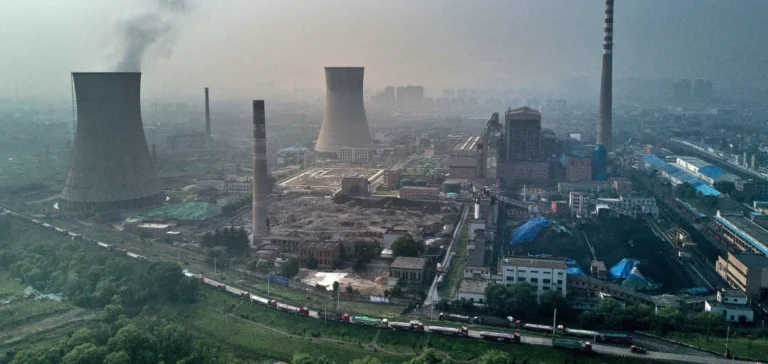A majority of experts surveyed by the Centre for Research on Energy and Clean Air (CREA) and the International Society for Energy Transition Studies (ISETS) estimate that China’s carbon dioxide (CO2) emissions will peak between 2026 and 2030. The year 2028 stands out as the most likely projection among the 68 researchers consulted. This panel is less confident than in 2024 about a peak already occurring in 2025, despite emissions having declined since March 2024.
A 2025 drop without certainty on its sustainability
The report, published on November 6, reveals that 70% of experts forecast a peak between 2026 and 2030, while 18% believe it has already occurred. Available data for 2025 indicate a potential first annual drop, but the authors urge caution. The future trajectory remains unclear, particularly in the short term, due to the absence of an official reference year.
In September, China announced a target of reducing its net emissions by 7% to 10% by 2035, based on an unspecified peak level. This marks the country’s first quantified net reduction goal, though several partners deemed it limited. It nonetheless forms part of the broader framework of international negotiations ahead of COP30.
Mixed medium-term commitments
According to the CREA–ISETS survey, 69% of experts believe China will partially or significantly exceed its 2035 targets. However, 99% of respondents expect the 2030 goals to be met. Short-term decarbonisation prospects are more uncertain, especially as fossil fuel infrastructure continues to expand.
Meanwhile, China surpassed in 2024 its initial 2030 target of 1,200 gigawatts (GW) of installed wind and solar capacity. This momentum continued into 2025, consolidating the country’s role as the leading global driver of renewable energy deployment.
Coal remains an obstacle to lower emissions
Despite this performance, increased reliance on coal has sustained high emissions levels. Data from the first half of 2025 show a structural turning point: installed solar and wind capacity exceeded thermal capacity for the first time in the country. This shift marks a structural inflection in China’s power system.
The automotive sector also reflects this transition. The market share of hybrid and electric vehicles temporarily crossed the 50% threshold in summer 2024 and continues to grow in 2025. This trend aligns with the national objective of making new energy vehicles the dominant segment by 2035.






















